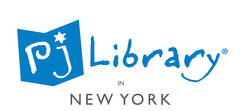- About Us
- Connect
- Learn
- Jewish Life
- Music
- Events
- Give
- Join Us
What about the high holy days?
05/24/2020 01:52:56 PM
| Author | |
| Date Added | |
| Automatically create summary | |
| Summary |
For weeks we have been following health protocols at Temple Israel to minimize the risk that the coronavirus poses to our sacred community. We followed the guidelines as they were released: providing hand sanitizing stations around the building, disinfecting surfaces, and social distancing.
Then we had to close our building for most of our activities. We conducted services streamed from an empty sanctuary. When our clergy and staff entered the building, we wore masks, taking them off only to lead services. We did all of these things because we affirm the mitzvah of pikuach nefesh, saving a life. There is no higher value in Judaism.
Now we are in a period of transition, a time of change. Other regions in our state are gradually opening up to allow limited activities, and our region will soon follow. We already have the green light to gather together in groups of ten or less for religious services.
After weeks of separation, many of us feel restless. We wonder when we can move more freely, when we can see family and friends again, when we and our neighbors can get back to work as we did before. I know I have been feeling all of these things.
It is a time of transition, and times of transition mean uncertainty. We do not want to follow the wrong health protocols and make the wrong decisions, because the consequences can be deadly.
This is the time to consider how to balance the risk of coming together, even in small groups, with the rewards of coming together.
It is time to start thinking about the High Holy Days. It is pretty clear that we are not going to be able to gather in large crowds as in past years. And it is not simply gathering in large crowds that poses a danger. Studies that have shown that there are particular dangers associated with communal singing, whether it be in a choir or a congregation. There are also risks associated with blowing the shofar in a contained space.
We have a particular vision of the High Holy days, with crowds and the choir and the shofar blasts. Familiar rituals bring comfort. To imagine them changing this year feels like another loss.
But change can be positive (something that I remind myself daily). This is an opportunity to think about what the “essence” of our rituals are. It is an opportunity to explore what makes the High Holy Days powerful, and how we can reconstruct what we do and experience our rituals in a new way – a way that is meaningful for our time.
In the coming weeks, as we begin to plan in this time of transition, if you have expertise to offer, we welcome it. (Those who are technologically savvy can be especially helpful to us.) If you have perspectives to offer, we welcome those perspectives too.
This is our community and we are the ones who make it sacred. I have faith that we will move forward with wisdom and with strength.
Tue, July 1 2025
5 Tammuz 5785
Temple israel Happenings
-
Tuesday ,
JulJuly 1 , 2025 Sisterhood Book Club
Sisterhood Book Club
Tuesday, Jul 1st 6:00pm to 8:30pm
We will be discussing the book called The Lion Women of Tehran by Marjan Kamali. It is a novel about the deep and complicated friendship of two Iranian women during pre- and post-revolution Iran. We will be meeting at a congregant's home and share a Pot Luck dinner. -
Tuesday ,
JulJuly 8 , 2025 Current Events
Current Events
Tuesday, Jul 8th 10:30am to 12:00pm
On the second Tuesday of each month, from 10:30 -12:00, join us at the Temple for our lively discussion around issues of local, national and international news events. We cover everything from breaking news to issues around health and well being and more! If you can't come in person, contact Shari to receive a link to join us virtually. -
Thursday ,
JulJuly 17 , 2025 Brotherhood BBQ @ Senasqua Park
Brotherhood BBQ @ Senasqua Park
Thursday, Jul 17th 6:00pm to 9:00pm
All men of Temple Israel are welcome to join the Brotherhood for grilled burgers, hot dogs & veggie burgers. Kids are welcome, too. We'll meet at Senasqua Park, in Croton, on the Hudson shoreline. We promise great sunset views and a chance to make some new friends, or catch up with old ones. -
Tuesday ,
AugAugust 5 , 2025 Current Events
Current Events
Tuesday, Aug 5th 10:30am to 12:00pm
On the second Tuesday of each month, from 10:30 -12:00, join us at the Temple for our lively discussion around issues of local, national and international news events. We cover everything from breaking news to issues around health and well being and more! If you can't come in person, contact Shari to receive a link to join us virtually.
Events
Today's Calendar
: 6:00pm |
: 7:30pm |
Friday Night
: 7:00pm |
Shabbat Day
: 9:30am |
Upcoming Programs & Events
Jul 1 |
Jul 4 Office Closed Friday, Jul 4 |
Jul 8 |
Jul 9 |
Jul 11 |
This week's Torah portion is Parashat Chukat
| Shabbat, Jul 5 |
Fast of Tammuz
| Sunday, Jul 13 |




